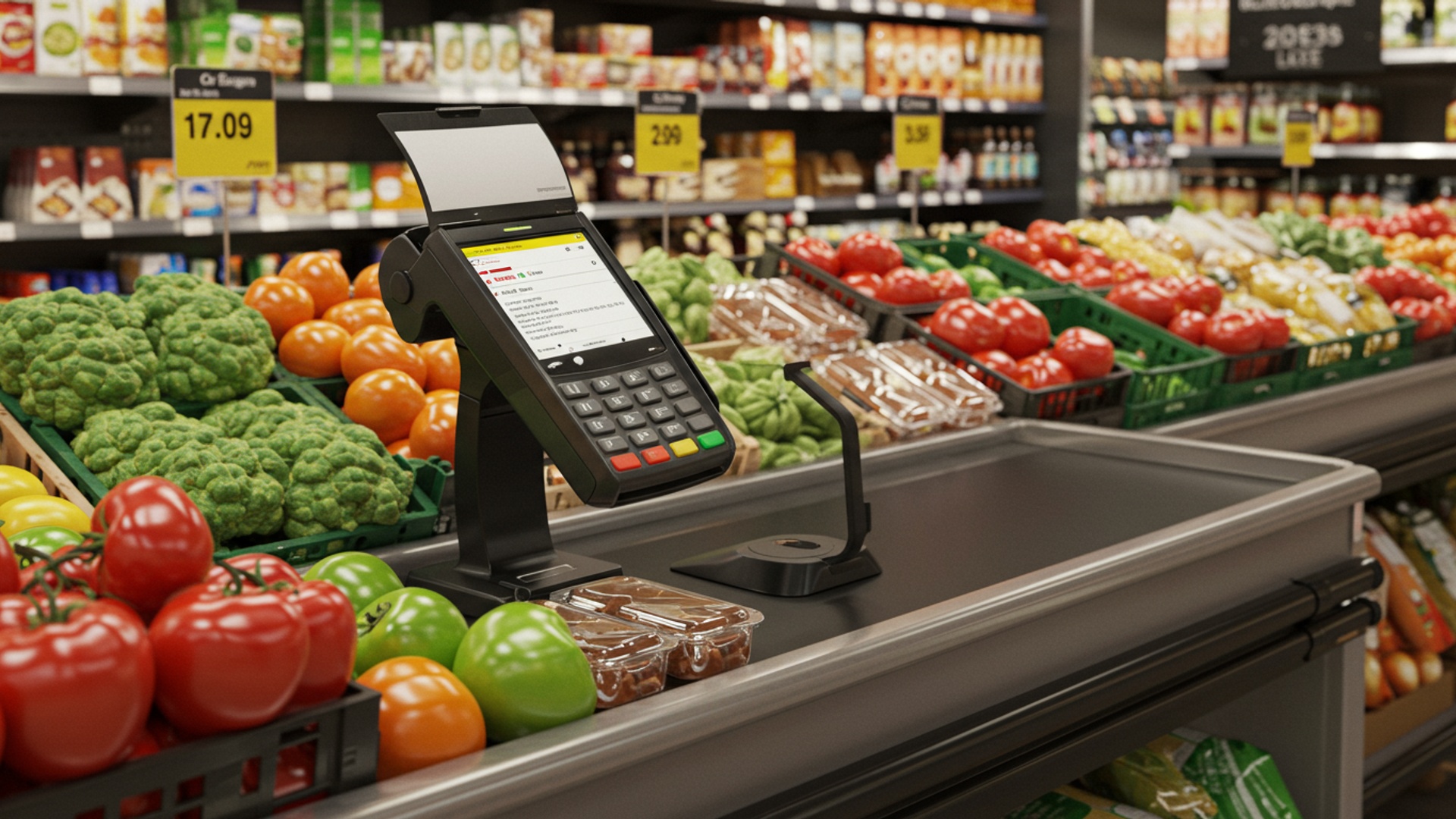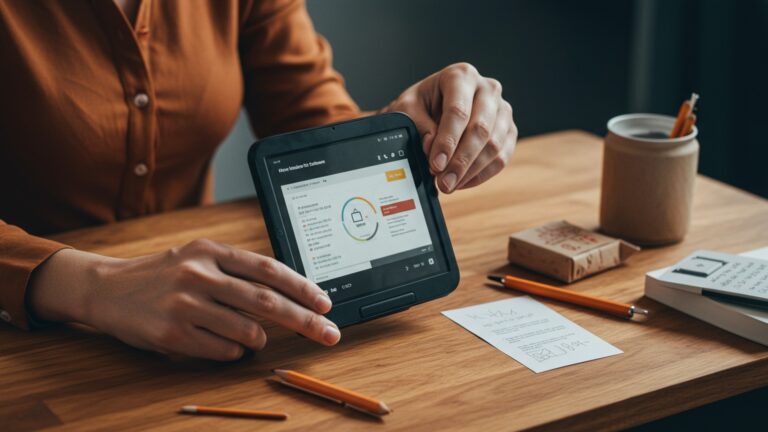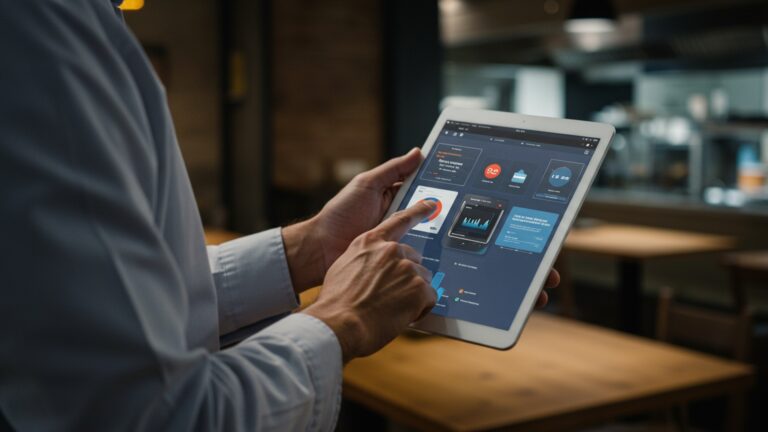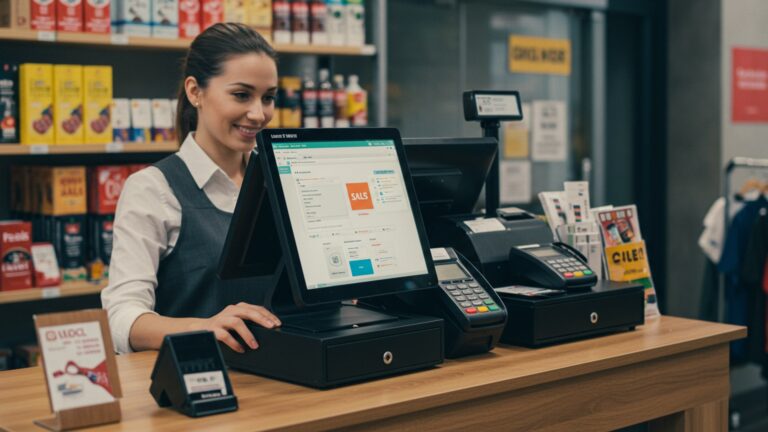Optimize Your Grocery Store Operations with the Right POS Software
Facing escalating operational costs and the imperative for real-time inventory visibility, modern grocery stores require more than just a checkout terminal. The strategic adoption of advanced pos software for grocery store operations is now critical, evolving beyond mere transaction processing to become an indispensable hub for efficiency. For example, cloud-based systems now integrate seamlessly with supply chain analytics, allowing managers to instantly track stock levels, minimize shrink. optimize ordering – a significant advantage given recent logistical disruptions. This integrated approach not only accelerates customer throughput with contactless payment options but also empowers data-driven decisions that enhance profitability and personalize the shopping experience, directly impacting a store’s competitive edge.

Understanding POS Software for Grocery Stores
At its core, Point of Sale (POS) software is the central nervous system of any retail operation. for grocery stores, its capabilities are particularly critical. Far beyond a simple cash register, modern pos software for grocery store environments integrates every aspect of a transaction, from scanning items and processing payments to managing inventory and tracking customer loyalty. It’s the digital backbone that enables efficient, accurate. customer-centric operations in a high-volume, fast-paced setting.
In essence, a POS system for a grocery store is a combination of hardware (like barcode scanners, receipt printers, cash drawers. payment terminals) and sophisticated software designed to handle the unique demands of fresh produce, varied product SKUs, rapid checkouts. often, complex pricing structures. It streamlines the sales process, provides crucial data for decision-making. enhances the overall shopping experience for customers while empowering staff with intuitive tools.
Essential Features of a Robust POS System for Grocery Operations
Selecting the right pos software for grocery store operations isn’t just about processing sales; it’s about choosing a comprehensive platform that addresses the specific challenges and opportunities within the grocery sector. Here are the indispensable features you should look for:
- Advanced Inventory Management
- Integrated Customer Relationship Management (CRM) and Loyalty Programs
- Comprehensive Sales Reporting and Analytics
- Efficient Employee Management
- Scalability and Seamless Integration
- Flexible Payment Processing
- Self-Checkout and Kiosk Options
- Perishable Goods Management
This is paramount for groceries. The software should track inventory in real-time, manage product variations (e. g. , by weight, unit, or package size), handle perishable goods with expiry date tracking (FIFO/FEFO), automate reordering based on sales data. manage stock across multiple departments or locations. It should also alert you to low stock levels and potential spoilage.
Building customer loyalty is vital. A robust POS system allows you to capture customer data, track purchase history, manage loyalty points, offer targeted discounts. personalize promotions. This fosters repeat business and provides insights into customer preferences.
Beyond basic sales figures, the software should offer detailed reports on product performance, peak selling times, employee sales, profit margins. inventory turnover. Customizable dashboards and analytical tools enable data-driven decisions on purchasing, staffing. marketing strategies.
Track employee shifts, sales performance. permissions. Some systems even integrate with payroll. This helps manage labor costs, identify top performers. ensure accountability.
Your chosen POS system should be able to grow with your business, whether you add more lanes, expand your product range, or open new locations. Crucially, it must integrate smoothly with other essential business tools like accounting software, e-commerce platforms. supplier management systems to avoid data silos.
Support for various payment methods is a must, including credit/debit cards, mobile payments (Apple Pay, Google Pay), gift cards, EBT. contactless options. The system should be EMV compliant and offer secure, fast transaction processing.
To reduce wait times and offer customer convenience, the ability to integrate with self-checkout terminals or order kiosks is becoming increasingly crucial for modern grocery stores.
This specialized feature is critical. It allows for tracking expiry dates, implementing first-in, first-out (FIFO) or first-expired, first-out (FEFO) inventory rotation. generating reports on waste and spoilage. This directly impacts profitability and reduces loss.
Transforming Your Operations: The Core Benefits
Implementing the right pos software for grocery store environments delivers a multitude of benefits that directly impact profitability, efficiency. customer satisfaction. These aren’t just incremental improvements; they represent a fundamental shift in how a grocery business operates.
- Increased Efficiency and Speed at Checkout
- Reduced Shrinkage and Improved Inventory Accuracy
- Enhanced Customer Experience
- Better Business Insights and Decision Making
- Streamlined Employee Management
- Compliance and Security
Rapid barcode scanning, intuitive touchscreens. quick payment processing drastically reduce customer wait times. This translates to higher customer satisfaction and the ability to serve more customers during peak hours.
Real-time inventory tracking minimizes losses from theft, spoilage. human error. Accurate stock levels mean you always know what’s on your shelves and what needs reordering, preventing both overstocking and stockouts. For perishable goods, this is invaluable in managing waste.
Faster checkouts, personalized promotions through loyalty programs. consistent pricing all contribute to a more positive shopping experience. Happy customers are loyal customers.
The rich data generated by a comprehensive POS system empowers owners and managers with actionable insights. comprehend which products are top sellers, identify slow-moving items, optimize staffing schedules based on traffic patterns. make informed purchasing decisions.
From time tracking to sales performance, a POS system simplifies managing your team. It can help identify training needs, reward top performers. ensure compliance with labor laws.
Modern POS systems are designed with robust security features to protect sensitive customer data and comply with industry standards (like PCI DSS for payment processing). This reduces risk and builds trust with your customers.
Choosing Your POS Software: Key Considerations and Comparisons
When evaluating different pos software for grocery store applications, it’s not a one-size-fits-all decision. Your specific needs, budget. business size will dictate the best fit. Here’s a comparison of common approaches and factors to consider:
| Feature/Category | Basic/Entry-Level POS | Mid-Range/Standard POS | Advanced/Enterprise-Level POS |
|---|---|---|---|
| Target Business Size | Small, single-location grocery stores, specialty food shops | Medium-sized grocery stores, multiple locations, growing businesses | Large supermarket chains, hypermarkets, complex operations |
| Key Strengths | Cost-effective, easy setup, essential sales & basic inventory | Balanced features, good reporting, moderate scalability, better inventory control (including perishables) | Comprehensive, highly customizable, robust analytics, advanced inventory, multi-store management, deep integrations |
| Inventory Management | Basic stock tracking, manual reorder points | Real-time tracking, vendor management, expiry date tracking, basic automated reordering | Multi-warehouse, batch tracking, FEFO/FIFO, advanced forecasting, inter-store transfers, full automation |
| Customer Management | Basic customer profiles, simple loyalty points | Integrated CRM, segmented marketing, gift cards, detailed purchase history | Advanced loyalty tiers, personalized promotions, sophisticated CRM, customer analytics, omnichannel support |
| Reporting & Analytics | Standard sales reports, daily summaries | Customizable reports, trend analysis, employee performance, basic profit margins | Deep dive analytics, predictive modeling, customizable dashboards, business intelligence tools, multi-location roll-ups |
| Integration Capabilities | Limited, often manual data export | Integrates with common accounting and e-commerce platforms | Open APIs, extensive third-party integrations (ERP, supply chain, marketing automation) |
| Cost (Software Only) | Low monthly subscription or one-time fee | Moderate monthly subscription, tiered pricing | Higher monthly/annual subscription, potentially custom pricing, significant implementation costs |
| Implementation Time | Days to a few weeks | Weeks to a few months | Several months to a year, complex setup |
| Support & Training | Basic online resources, email support | Phone, email, chat support, some onboarding training | Dedicated account manager, 24/7 support, extensive training, on-site options |
Beyond these categories, consider whether you prefer a cloud-based (SaaS) solution or an on-premise system. Cloud-based offers flexibility, remote access. automatic updates, while on-premise provides more control over data and customization, albeit with higher upfront costs and maintenance.
A Fresh Start: A Grocery Store’s POS Success Story
Consider “FreshHarvest Market,” a medium-sized, family-owned grocery store with two locations. For years, they relied on an outdated, fragmented system that combined an old cash register, manual inventory spreadsheets. a separate loyalty program managed on paper punch cards. The results were predictable: long checkout lines, frequent stockouts of popular items, excessive waste from expired produce. no clear understanding of customer purchasing habits.
Recognizing the need for change, FreshHarvest Market invested in a modern pos software for grocery store operations. They chose a cloud-based solution known for its robust inventory management, especially for perishables. integrated CRM capabilities. The implementation involved:
- Data Migration
- Hardware Setup
- Staff Training
- Loyalty Program Launch
Painstakingly entering all existing product SKUs, pricing. initial inventory counts.
Installing new barcode scanners, touch-screen terminals. integrated payment processors at each checkout lane.
Comprehensive training sessions for all cashiers, stock managers. store supervisors on how to use the new system, from processing sales to managing returns and checking inventory.
Transitioning their paper punch cards to a digital, points-based loyalty program directly linked to the POS.
Within six months, the transformation was remarkable. Checkout times decreased by 25%, significantly improving customer satisfaction. Inventory accuracy soared to 98%, reducing spoilage by 15% and nearly eliminating stockouts of key items. The new loyalty program, driven by the POS, allowed FreshHarvest to send targeted promotions, resulting in a 10% increase in repeat customer visits. Managers could pull real-time reports on sales trends, enabling them to optimize ordering and staffing, leading to a 5% reduction in operational costs. This real-world example demonstrates how the right POS software can revitalize a grocery business, turning operational pain points into strategic advantages.
Implementing Your POS: Actionable Steps for Success
Once you’ve identified the ideal pos software for grocery store needs, a structured implementation plan is crucial for a smooth transition and maximum benefit. Here are actionable steps:
- Define Your Requirements Clearly
- Research and Demo Multiple Solutions
- Budget Realistically
- Plan for Data Migration
- Thorough Staff Training
- Phased Rollout (If Applicable)
- Monitor and Optimize
- Prioritize Security and Backups
Before even looking at software, list all your must-have features, nice-to-haves. integration needs. Consider your current pain points and future growth plans.
Don’t settle for the first option. Schedule demonstrations with several vendors. Ask specific questions about how their system handles grocery-specific challenges like weighted items, fresh produce management. high transaction volumes.
Account for not just software subscriptions. also hardware costs, implementation fees, training. ongoing support. Hidden costs can quickly derail a project.
This is often the most time-consuming part. Decide how you will transfer existing product data (SKUs, prices, descriptions), customer data. initial inventory counts. Accuracy here is paramount.
Invest in comprehensive training for all employees who will interact with the system. Hands-on practice, clear manuals. accessible support will ensure a smooth adoption and reduce errors. Consider training super-users who can assist other staff members.
For larger stores or multiple locations, consider a phased rollout. Start with one department or one checkout lane, troubleshoot issues. then expand. This minimizes disruption to daily operations.
After implementation, regularly review your POS reports and analytics. Identify areas for improvement, adjust inventory parameters, refine loyalty programs. ensure the system is being utilized to its full potential. Provide feedback to your vendor if you encounter recurring issues or need new features.
Ensure your system has robust security protocols and that data is regularly backed up, especially for cloud-based solutions. grasp the vendor’s data recovery plan.
Conclusion
Ultimately, optimizing your grocery store operations isn’t just about efficiency; it’s about future-proofing your business. The right POS software transforms your store from a mere transaction point into a data-driven hub, streamlining everything from inventory management to customer engagement. My personal tip? Don’t just settle for basic features; look for advanced capabilities like real-time inventory alerts for perishable goods, which can drastically cut down on waste – I’ve seen this personally save small businesses thousands. The current trend towards frictionless checkout, including self-service kiosks and integrated payment gateways, demands a robust system capable of handling evolving consumer expectations. Therefore, your next step is to critically assess your current pain points and seek a POS solution that acts as your operational command center. By embracing a system that offers comprehensive analytics and adapts to recent developments like enhanced loyalty programs, you empower your team and elevate the customer experience. Remember, investing in the right POS is an investment in your grocery store’s resilience and growth, enabling you to compete effectively and thrive in an ever-changing retail landscape.
More Articles
Master How to Select POS Software for Your Grocery Store
Discover How to Optimize Your Business with Smart POS Billing Software
Learn How Cloud Based POS Software Boosts Business Efficiency
A Comprehensive Guide to Mastering Essential POS Software Features
FAQs
What exactly is a POS system for a grocery store?
A POS (Point of Sale) system for a grocery store is essentially the central hub for all your sales transactions, inventory management. customer interactions. It’s the software and hardware that helps you ring up sales, process payments, track what’s in stock. much more, all designed to keep your store running smoothly.
How can the right POS software really improve my grocery store’s operations?
The right POS software can transform your operations by speeding up checkout lines, giving you real-time insight into your inventory, helping you manage staff schedules. providing valuable sales data. All these things lead to better efficiency, reduced waste. ultimately, higher profits.
What key features should I look for in grocery store POS software?
For a grocery store, you’ll want features like robust inventory tracking (especially for perishable goods), integrated loyalty programs, scale integration for weighed items, quick and customizable checkout screens, employee management tools. comprehensive reporting to grasp your sales trends.
Can a modern POS system help me reduce food waste or spoilage?
Absolutely! A good POS system offers real-time inventory tracking, which means you always know what you have on hand, when it expires. what’s selling well. This insights empowers you to make smarter ordering decisions, rotate stock effectively. minimize waste from spoiled or unsold products.
Is it difficult to train my employees to use new POS software?
Most modern POS systems are designed with user-friendliness in mind, featuring intuitive interfaces that are easy for staff to learn. Many providers also offer training resources and ongoing support, making the transition much smoother than you might expect, even for employees less familiar with technology.
What about customer loyalty programs? Can a POS help me build those?
Yes, many advanced POS systems come with built-in or integrated loyalty program capabilities. You can easily track customer purchases, offer targeted discounts, create points systems. manage personalized rewards to keep your shoppers engaged and encourage repeat business.
How does a POS handle inventory management with so many different grocery items?
A good grocery POS system automates much of the inventory process. It tracks items from when they’re received to when they’re sold, allows for categorization, sets reorder points. can even manage inventory across multiple store locations. This automation simplifies managing a vast and varied product range.






